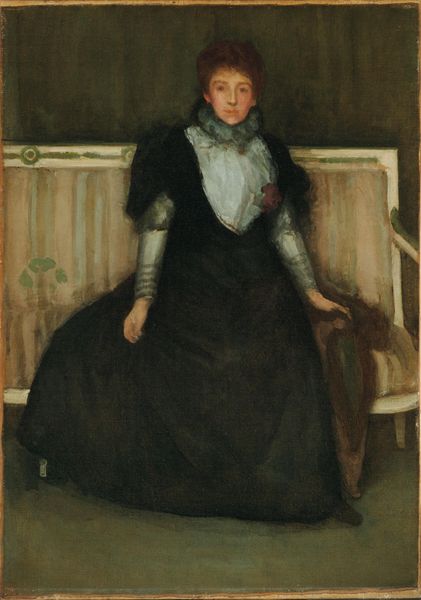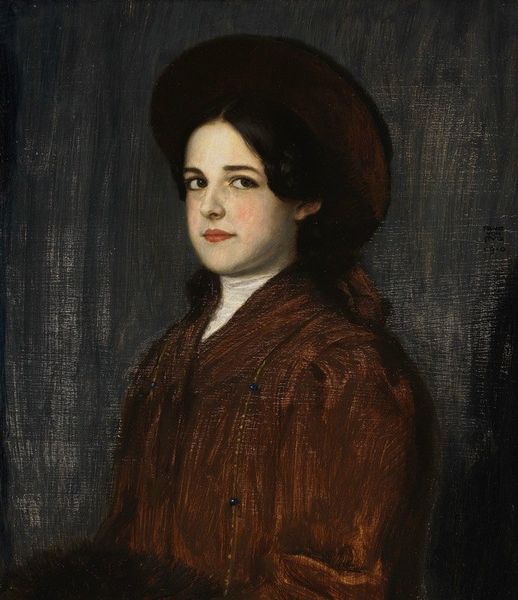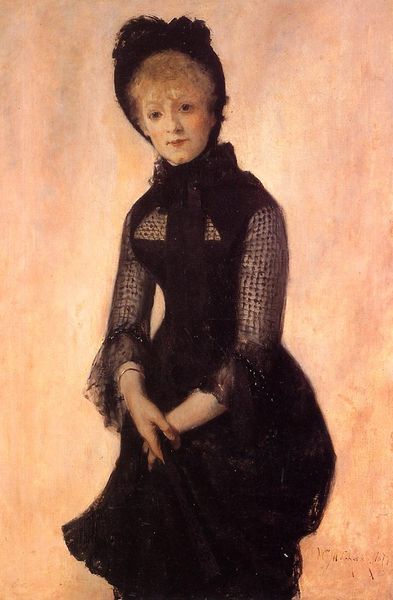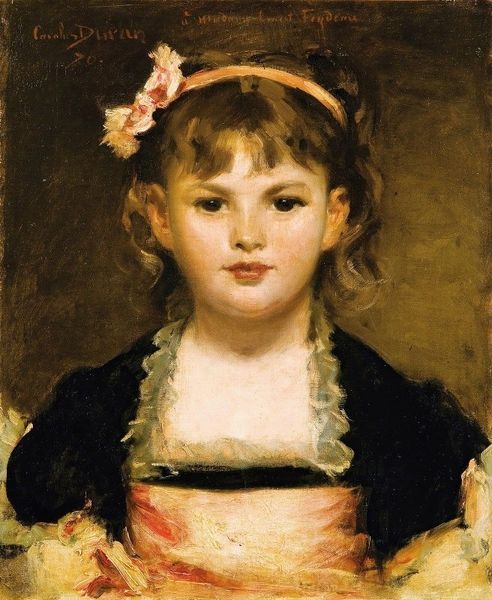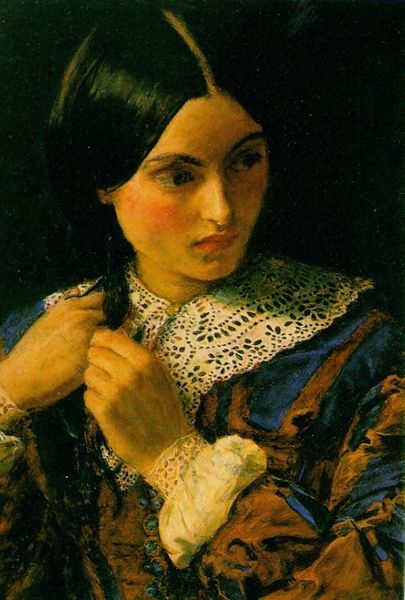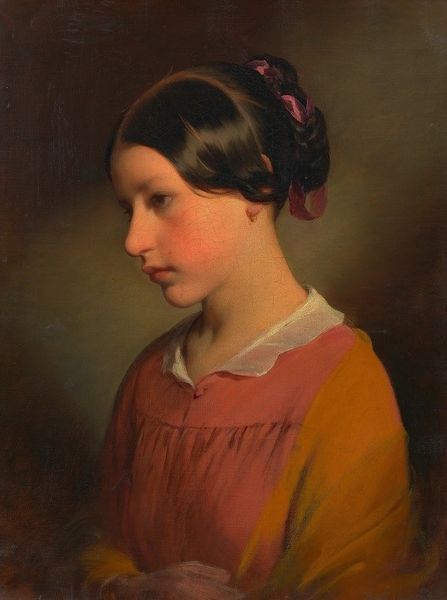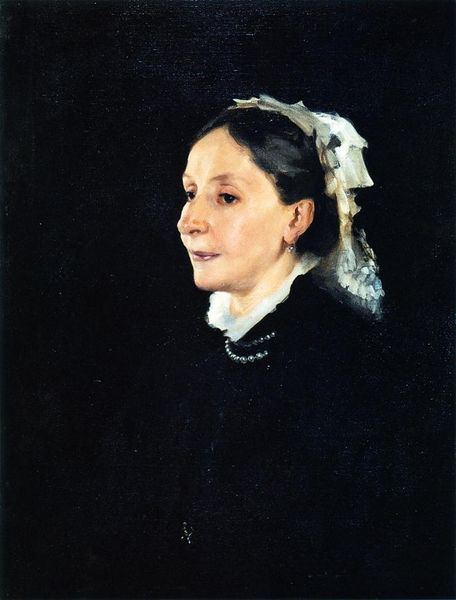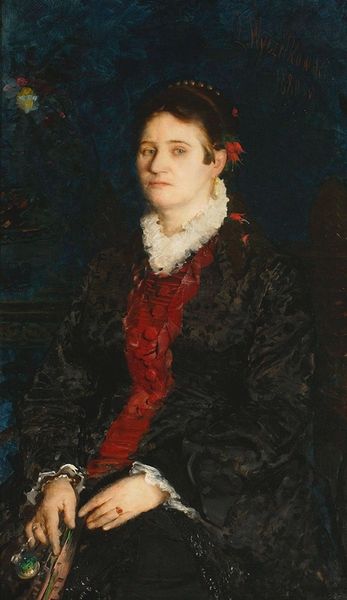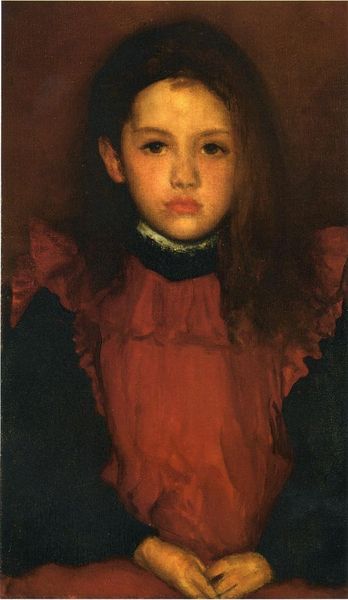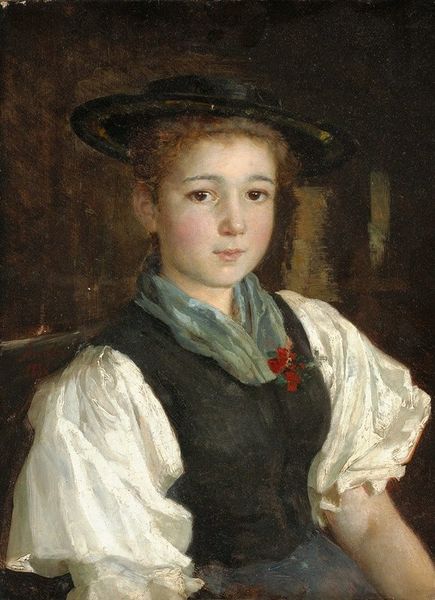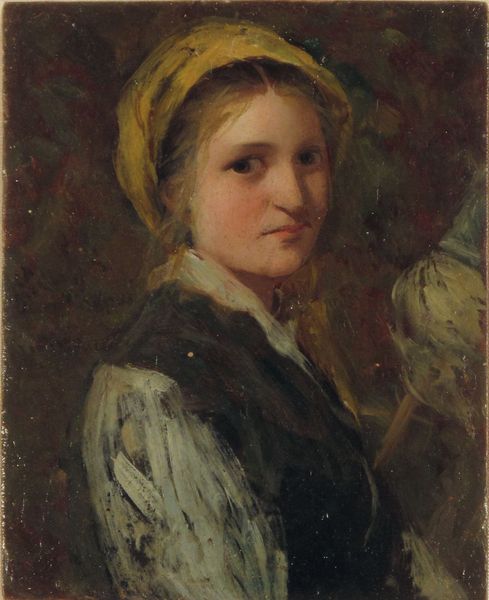
Dimensions: 73 x 48.9 cm
Copyright: Public domain
Curator: Gwen John’s painting, “Dorelia in a Black Dress,” from 1904, presents a compelling image. Editor: Yes, the color scheme immediately strikes me—it’s all deep umber and black, with the exception of a muted rose scarf. The effect is… introspective, almost melancholic. Curator: It’s a study of Dorelia McNeill, an artist model who would later become the second wife of John’s brother, Augustus. Looking at this painting in the context of the time, one might consider the dynamics of artistic circles in the early 20th century and the role of women within those groups. The portrayal resists idealization and instead captures a subtle strength and self-possession. Editor: Note the texture created with oil paints; particularly how light seems to sink into the fabric of the dress and reflect softly off the face. John's brushstrokes are very visible, creating a surface that almost shimmers in places. This lends the figure an arresting presence despite her subdued affect. Curator: Her closed off posture and the somber palette might also suggest the social constraints placed upon women at the time. Dorelia stands at a certain remove, perhaps commenting on her own position as both muse and individual within these complex relationships. It’s possible that this tension, consciously or not, contributes to the work’s emotive power. Editor: The subtle asymmetry also enhances this effect, look how the draping fabric, cut the pictorial field almost in half creating spatial tension between the figure and what may simply be an undifferentiated surrounding void. The composition emphasizes a quiet, perhaps contained energy. Curator: Indeed. Thinking about John’s biography and the way that women are represented, it becomes very telling to observe such a sensitive depiction. Editor: It certainly speaks volumes about how, even within limited tonal ranges, formal decisions can elicit a complex emotional and intellectual engagement. Curator: Absolutely. This deep dive illustrates the power of close readings and historical contexts. We have uncovered, I believe, some fresh approaches for viewing. Editor: And for me it's clarified how vital form is to understanding both historical art objects and their contemporary relevance.
Comments
No comments
Be the first to comment and join the conversation on the ultimate creative platform.
